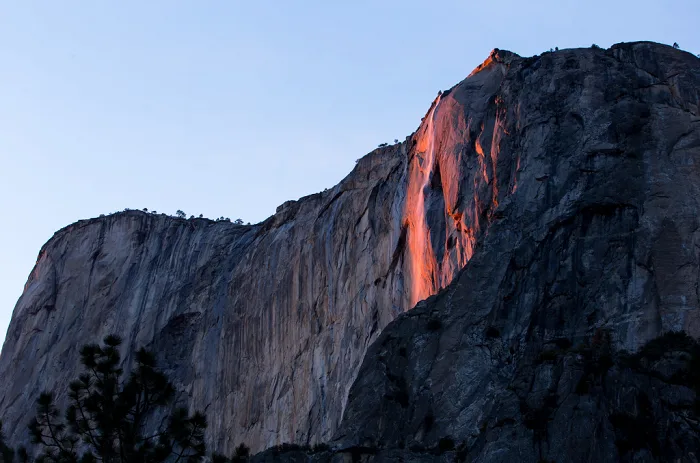
The firefalls are coming, but won't last long
Learn more about this annual phenomenon
Every year nature-loving crowds head to California's Yosemite National Park in California in search of a short-lived optical illusion that can only be seen if the weather cooperates: The 'firefall.'
This photogenic phenomenon is an annual February occurrence. Starting around mid-month, the setting sun aligns with Yosemite's falls, highlighting the falls with vivid shades of golden yellow and orange that looks a bit like falling lava.
It persists for a few weeks, but catching the firefalls can be tricky. It's only present for about 10 minutes each day, and only if the weather cooperates.
The falls tend to run dry in the winter so for for a firefall to occur temperatures need to be warm enough to initiate snowmelt at the top of the mountain.
"While 'firefall' is certainly an apt name for the sight, it is also a nod to 'original' Yosemite Firefall, a summer nighttime spectacle put on by the owners of the Glacier Point Hotel in the late nineteenth century through the late 1960s," says Weather Network meteorologist Caroline Floyd.
"Glowing embers were pushed from the top of Glacier Point and allowed to fall more than 900 metres to the valley below, making a 'waterfall of fire' for the delight of onlookers. The National Parks Service put a stop to the show in 1968, in the interest of preserving the natural environment."
Thumbnail image courtesy: Flickr/evelynquek/Attribution 2.0 Generic (CC BY 2.0)











